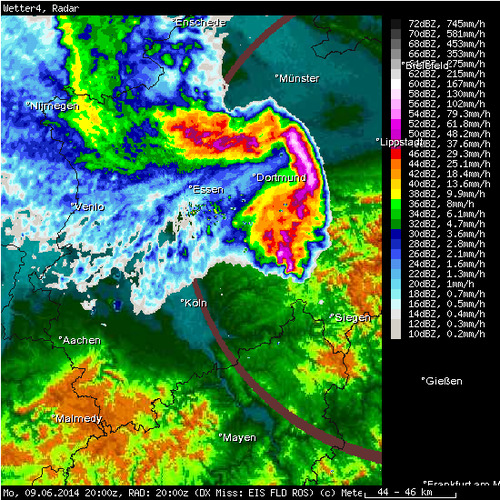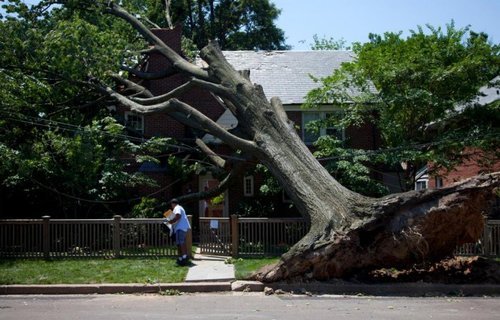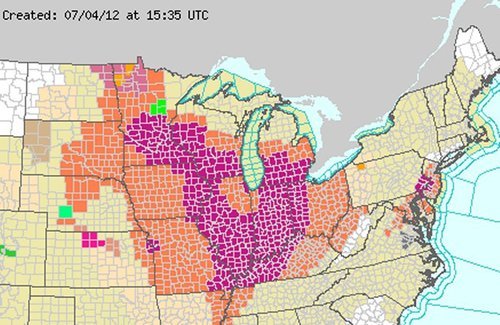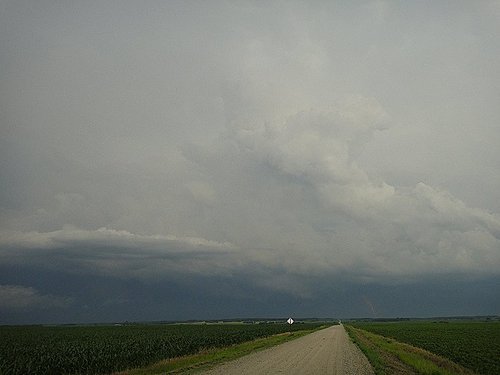Sunday, June 19th marks both Father’s Day as well as the Manitoba Marathon, and unfortunately it appears that the unsettled weather we talked about in Friday’s post has the potential to bring a significant threat of severe thunderstorms to the region.
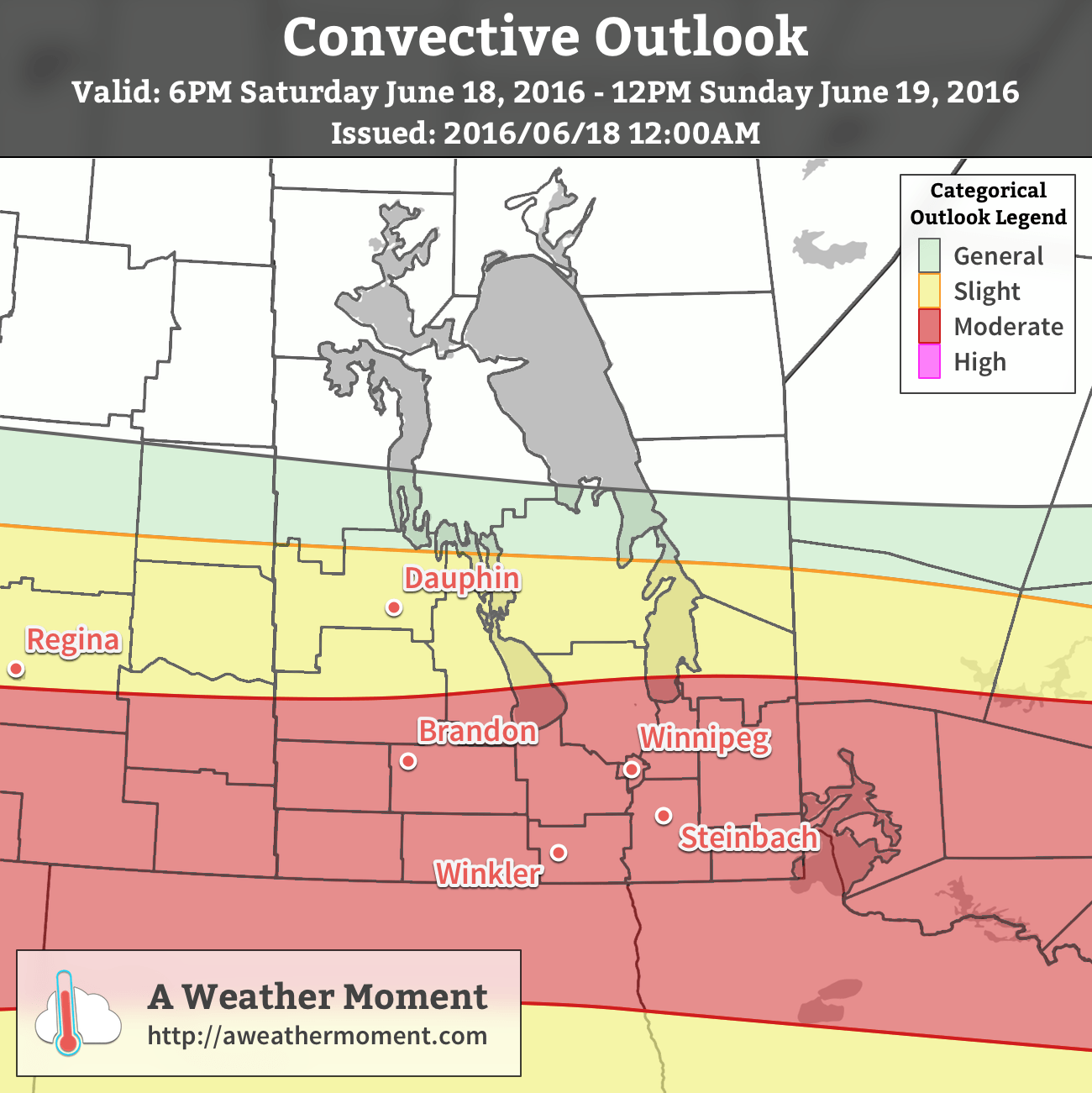
The Short Version
Severe thunderstorms are possible early Sunday morning, however that threat will be conditional on the expected development of thunderstorms in Saskatchewan on Saturday night.
The current expectation is that an area of thunderstorms will develop over Saskatchewan Saturday night, expanding in coverage and accelerating eastwards through the overnight period. This area of convection will then move through the Red River Valley with a primary threat of severe and damaging winds as well as large hail and torrential rain capable of producing flash flooding.
| Threat Type | Threat Level | Details |
|---|---|---|
| Rain | Moderate | Torrential rainfall possible with flash flooding. |
| Hail | Moderate | 2-4cm hail possible. |
| Wind | Moderate | Strong wind gusts in excess of 100 km/h likely |
| Tornado | Low | No tornado activity expected. |
The thunderstorm activity is expected to occur between 4:00AM and 9:00AM, with the primary threat period between 5:00AM and 7:00AM. The timing may adjust depending on the exact speed of the system, but overall this is expected to be a morning event.
| 6AM | 8AM | 10AM | 12PM |
|---|---|---|---|
| 17°C | 19°C | 21°C | 23°C |
| Thunderstorms likely | Thunderstorm activity diminishes | Slight chance of showers | Partly cloudy |
Alongside the thunderstorms, conditions will get notably more humid as the morning progresses.[1] By the time any thunderstorm or rain showers taper off, things will feel fairly sticky. Temperatures will start around the 16-17°C mark in the morning, climbing to around 23°C by noon, and then on to a high near 27°C in the afternoon. Winds will be fairly light until mid-afternoon when they pick up from the west to around 20-30 km/h, ushering in drier air and providing some relief from humidity.
The Details
The potent thunderstorm potential for Saturday night and Sunday morning across the southern Prairies will be the result of a potent shortwave that ejects northeastwards out of Montana on Saturday and then rides eastwards along the international border. This will spawn a surface low with cold front draped southwards as cooler air builds in behind the shortwave and warm front extending eastwards across the northern portions of the Northern Great Plains. The surface low will then slide eastwards, gradually lifting the warm front northwards as it goes.
This shortwave will [likely] initiate an area of convection over southwestern Saskatchewan that will track eastwards along with the shortwave. The orientation of the warm front will provide plenty of support for the convection with shear profiles that indicate the likely development of a MCS[2] containing bow echoes.
Going over the MIST ingredients:
- Moisture: Dewpoint values near 18°C will be ingested into the convection on Saturday night. This will provide substantial energy for the thunderstorms to work with. Additionally, the high moisture content of the air being ingested will increase PWAT[3] values to over 50 mm, making very intense rainfall likely with any thunderstorms that develop.
- Instability: Steep mid-level lapse rates will combine with the warm and humid air of the nocturnal inflow to produce MUCAPE values in excess of 2000 J/kg.
- Shear: 55-65 kt of bulk shear coupled with veering profiles within the convection will support the development of strong, organized thunderstorms.
- Trigger: Shortwave-induced mid-level destabilization coupled with the development of a strong LLJ.
For these parameters, the primary concerns will be hail and rain, however should the storms be able to break through the inversion, wind will rapidly become a significant threat as gusts in excess of 100 km/h will be possible.
The steep mid-level lapse rates combined with high MUCAPE values will produce a moderate hail threat with hail between 2-4 cm in diameter possible. The heightened PWAT values make torrential rain likely with these storms, which can result in rapid accumulations and flash flooding. The strong winds & shear profiles of the storm environment make damaging wind gusts possible. Justification for the strong winds despite the nocturnal part of the convection will be the intense storm-relative winds that will be associated with this quickly-moving system. The SR-inflow will likely be strong enough lift the low-level air mass wholesale into the storm, resulting in a surface-based or near-surface-based thunderstorm.
Summary
Father’s Day of 2016, and the Manitoba Marathon, face the potential of being remembered for severe thunderstorms if current guidance continues painting the picture it does. Thunderstorm potential is conditional on nocturnal convection developing on Saturday night in Saskatchewan, but if it does, there is a significant threat of severe thunderstorms over Southern Manitoba on Sunday morning.
The timing for the primary severe thunderstorm threat will be in the early morning, buffering the starting time for the marathon, with much of the thunderstorm activity expected to be out of the region by 10-11AM. In the wake of this system will be a warm day that will feel fairly humid until westerly winds kick in mid-afternoon, pushing out the humidity and drawing in drier, slightly cooler air for the start of next week.

